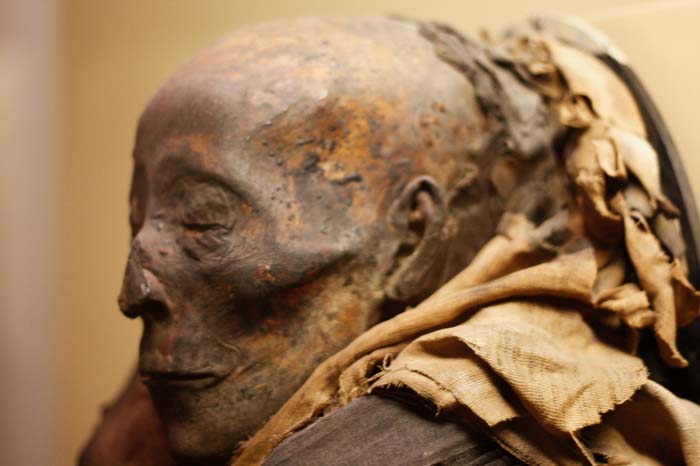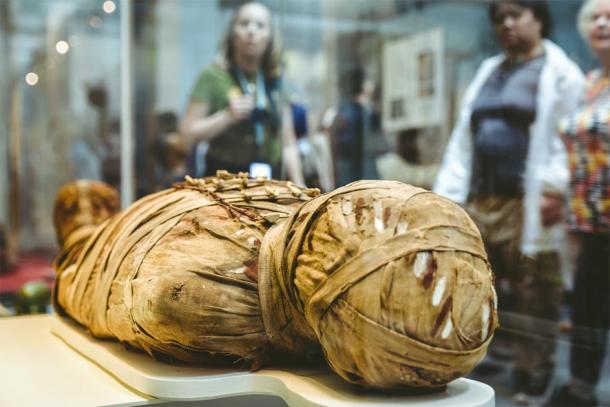
Three-dimensional computed tomography of the mummy Wenuhotep.

Artificial mummification was performed on every continent, especially in South and Central America. Animals were also mummified to provide food for the deceased, to accompany the deceased as pets, because they were seen as corporal manifestations of deities, and as votive offerings. After the body was dehydrated, the body cavities were rinsed and packed to restore the body’s former shape. The most important, and probably the most lengthy, phase was desiccation. First, the body was cleaned with a natron solution then internal organs were removed through the cribriform plate and abdomen. Their use of evisceration followed by desiccation with natron (a compound of sodium salts) to halt putrefaction and prevent rehydration was so effective that their embalmed bodies have survived for nearly 4500 years. The ancient Egyptians are most famous for this. The purpose of artificial mummification was to preserve that person’s morphologic features by delaying or arresting the decay of the body. Mummification processes can be summarized as “artificial,” when the procedure was performed on a body with the aim of preservation, or as “natural,” when the body’s natural environment resulted in preservation.

CT also supplies three-dimensional information about the scanned object. It allows for noninvasive insight, especially with virtual endoscopy, which reveals detailed information about the mummy’s sex, age, constitution, injuries, health, and mummification techniques used. Computed tomography (CT) has proved to be a valuable investigative tool for mummy research and is the method of choice for examining mummies.


 0 kommentar(er)
0 kommentar(er)
